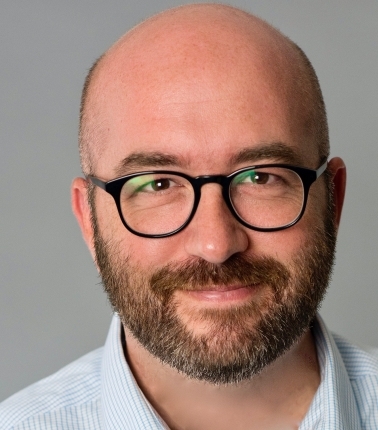
Ira Gooding is well-known and highly respected within our digital and online learning community. At Johns Hopkins University, Ira serves in the provost’s office as a special adviser for digital initiatives, and he is the assistant director for open education at the Bloomberg School of Public Health.

Q: Tell us about your roles at the provost’s office and the Bloomberg School. What does your work at Hopkins entail and how do your leadership positions interact?
A: My work in the provost’s office is focused on three goals: fostering teaching innovation through digital technology, facilitating collaboration and connection across divisional lines, and managing our engagement with Coursera.
A major project that incorporates all three goals is our Digital Education and Learning Technology Acceleration (DELTA) initiative. Each year, we use a portion of our Coursera royalty revenue to award internal grants of up to $75,000 to develop, implement and evaluate an innovative application of technology intended to enhance teaching and learning. To date, we’ve awarded more than $2.6 million to 41 different project teams focused on a wide array of innovative approaches, including VR/AR, generative AI, learning at scale, faculty development programming and clinical simulation, among others.
We also hold an annual Provost’s DELTA Teaching Forum that brings together faculty and teaching and learning staff from across Johns Hopkins to provoke conversation, spark new thinking and advance the ongoing pursuit of teaching excellence. The next forum will be held on May 1.
In the Bloomberg School of Public Health, I lead a small team within the Center for Teaching and Learning. We focus our attention on developing open learning experiences and open educational resources for independent learners and public health educators beyond the boundaries of our master’s and doctoral programs. We’ve supported the development of more than 80 MOOC courses, specializations and teach-outs, and we’re in the process of developing a new OER repository for JHU.
The repository project is a good example of the interaction between my two roles. The Bloomberg School’s Center for Teaching and Learning is developing the platform, but it will serve as a repository for OER from across the entire university, and publishing authority will be distributed in order to reduce bottlenecks.
Q: Looking forward to 2025, what challenges, trends and opportunities related to online and digital learning are at the top of your mind?
A: I hope it’s OK that my answers go beyond 2025.
I’m curious to see how higher education will be affected in the years ahead by the arrival of students whose early primary school years were disrupted by the COVID-19 pandemic and the switch to emergency remote teaching. The oldest members of that cohort are hitting high school this year, and it won’t be long before they arrive (or not) on our campuses. What expectations will they have for digital learning? Will they value in-person experiences differently from today’s students? What learning habits will they bring with them? So, I see an opportunity to start designing that cohort’s learning experiences now. How might we prepare ourselves to offer them a higher education experience that meets their needs and helps them thrive?
Also, I’ve spent a lot of time thinking about David Wiley’s recent argument about generative AI’s impact on open educational resources. In September, he gave a talk titled “Why Open Education Will Become Generative AI” for the University of Regina. In it, he argues pretty persuasively that generative AI has the potential to become a more effective tool than OER for increasing educational access due to its profound impact on the process of authoring, revising and remixing instructional materials.
That’s a provocative position, and I don’t know whether things will play out as he predicts. Regardless, I’m curious to see the interplay of generative AI and OER in the years ahead.
Q: What advice would you give an early or midcareer colleague interested in working toward a digital/online learning leadership role?
A: I’d encourage them to look for opportunities to reduce institutional friction and to develop a reputation for clearing paths instead of erecting obstacles. A certain amount of friction is necessary for managing risk and encouraging high-quality work, but a lot of friction in higher ed comes from simple inertia.
People who aspire to lead can make a lot of progress by understanding the constraints that hinder innovation and then actively working to mitigate them on behalf of the innovators within their institutions.
Of course, people run the risk of becoming gatekeepers as they advance into leadership positions, so it’s important to question one’s own assumptions and the value of yesterday’s solutions and to look for new solutions instead of continuing to rely on the old ones.